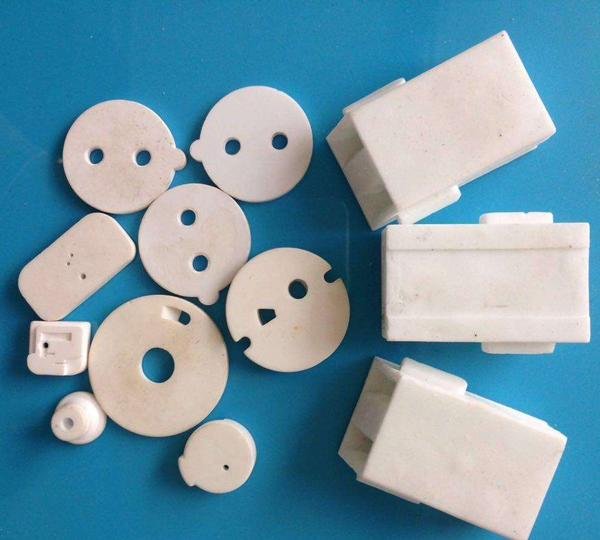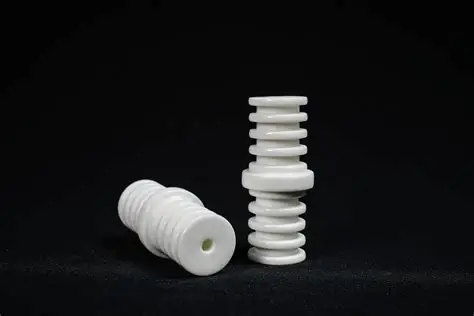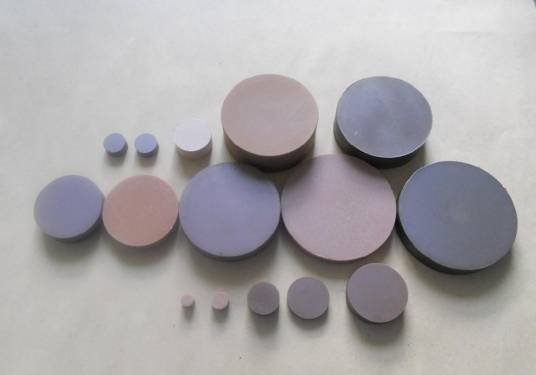Electronic Ceramics:
Electronic ceramics refer to various ceramics applied in electronic technology, specifically ceramic materials used in the electronics industry to manufacture electronic components and devices. They are generally categorized into structural ceramics and functional ceramics (primarily electrically functional). Structural ceramics denote ceramic materials used to produce substrates, housings, fasteners, and insulating parts for electronic components, devices, assemblies, and circuits, also known as device ceramics.

They can be broadly categorized into three types: vacuum ceramic, resistor substrate ceramic, and insulating components. Functional ceramics, on the other hand, are ceramic materials used to manufacture capacitors, resistors, inductors, transducers, filters, sensors, etc., serving one or more functions in circuits. They can be classified into capacitor ceramics, ferroelectric ceramics, piezoelectric ceramics, semiconductor ceramics, and magnetic ceramics.
Electronic ceramic materials are characterized by their electrical, magnetic, optical, thermal, and mechanical properties, as well as their ability to convert between these states. They serve as critical materials in numerous high-tech fields, including electronics, communications, automatic control, information computing, lasers, medicine, machinery, automotive, aviation, aerospace, nuclear technology, and biotechnology. Electronic ceramics reportedly account for approximately 70% of the total value of advanced ceramics, yielding significant social benefits and substantial economic returns. Consequently, they are prioritized for development in economically advanced countries and regions. Electronic ceramics can be categorized by application and functionality into the following types: insulating device ceramics, dielectric ceramics (primarily used for capacitors), semiconductor ceramics, conductive ceramics, and superconducting ceramics.
Brief introduction to common electronic ceramic types:
① Insulating Ceramic Ceramics
The insulating mechanism of insulating ceramics involves the solid's energy band structure: the band filled with electrons is called the valence band, while the band not occupied by electrons is called the conduction band. The region between the valence band and conduction band is termed the band gap.
If the band gap width is sufficiently large (several eV or more), electrons in the valence band cannot be easily excited to cross the band gap into the conduction band. This means electron migration is virtually impossible, making the solid a typical insulator.
Insulating ceramics, also known as device ceramics, are ceramic materials used in electronic equipment for mounting, fixing, supporting, protecting, insulating, isolating, and connecting various radio components and devices. They feature low dielectric constant, low dielectric loss, high dielectric resistivity, high dielectric strength, high mechanical strength, excellent thermal shock resistance, and stable performance under varying humidity and frequency conditions.

Insulating ceramics are fired at 1000°C. Due to incomplete sintering, they typically exhibit hygroscopicity and are unsuitable as insulating materials. When processed with fluxing agents like clay, at elevated temperatures above water, and with appropriate feldspar additions at high temperatures,
Insulating ceramics fired at 1200°C exhibit high density and transparency. With the advent of electronic technology, they were adopted as insulating materials, later evolving into today's metallurgical industrial ceramics and chemical ceramics.
Applications of Insulating Ceramics:
Integrated Circuit Substrates、Electronic Devices
The advancement of miniaturization technology in electronic devices positions substrates within integrated circuits to support thick-film components, interconnections, surface-mounted elements, and encapsulation. In high-power circuits, substrates also serve a heat dissipation function.
② Dielectric Ceramics
Dielectric ceramics essentially belong to the same ceramic category as insulating ceramics. However, unlike insulating ceramics, those primarily utilizing dielectric properties are termed dielectric ceramics. Alternatively, dielectric ceramics are a class of ceramics engineered by controlling their dielectric properties to achieve high dielectric constants, low dielectric loss, and appropriate dielectric constant temperature coefficients. Dielectric ceramics represent the largest production segment within electronic ceramics, primarily used in ceramic capacitors and microwave dielectric components.

③Piezoelectric ceramics
Piezoelectric ceramics generate piezoelectric effects and find extensive applications across various fields of production and daily life, ranging from lighters to space shuttles. Currently, over a hundred manufacturers produce piezoelectric ceramic materials and devices domestically, resulting in intense competition. Most piezoelectric ceramics currently contain Pb. With increasing environmental awareness, lead-free piezoelectric ceramics represent an inevitable future trend.
Norke’s product range includes specialized ceramic materials, including Insulator Electrical Ceramics. These products find extensive applications across various high-end industries, including electronics, machinery, chemicals, metallurgy, new energy, and semiconductors.
